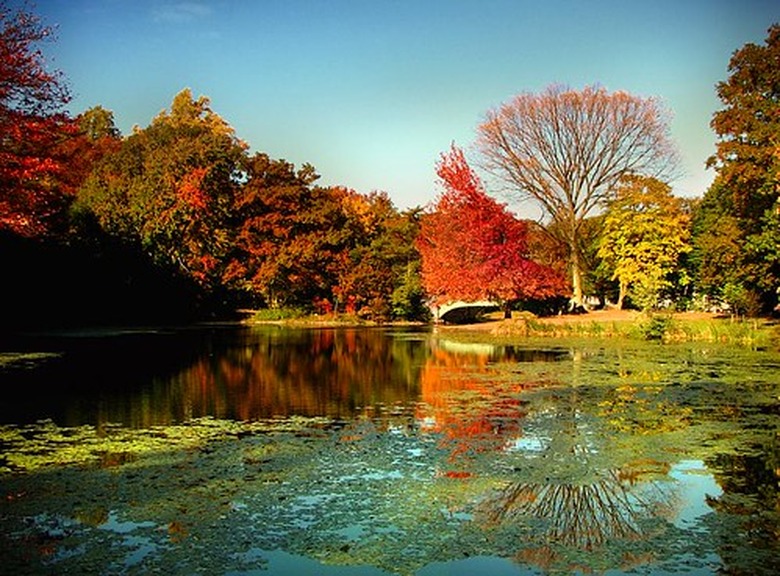Aquatic Plants & Kids
An aquatic plant is any sort of vegetation that lives and grows in water, be it sea water in the ocean or fresh water such as streams, rivers, lakes and ponds. Just as water-dwelling animals have achieved certain evolutionary adaptations that their land-animal counterparts have not, aquatic plants include features that terrestrial (i.e., land-bound) species do not.
Studying features of aquatic plants can be an engaging learning activity for kids from kindergarten to high school. Facts about aquatic plants for kids are the same facts adults should learn, but they often need to be presented differently to children. Knowing a few different types of aquatic plants is useful and fun for younger age groups, while older kids can be introduced to the basics of plant metabolism and evolution.
Basic Water Plant Facts
Basic Water Plant Facts
Water plants or aquatic plants are more formally referred to as "submerged macrophytes." Kids should know that aquatic plants, however hidden from everyday view most of them may be, are a critical part of the ecosystems they inhabit. Without them, animal species in their midst may not have sufficient access to oxygen, which aquatic plants and algae supply in abundance via their metabolic processes. These plants and algae also supply food for some animal species; for examples, turtles consume the scummy-looking algae from freshwater pond surfaces.
Some aquatic plants float on the surface of fresh water; others have especially strong stems and roots that allow them to remain firmly anchored in soil in shallow water despite being subject to strong currents. Moss famously clings to rocks, as most kids who explore the outdoors have probably noticed.
Water Plant Nourishment
Water Plant Nourishment
All plants, aquatic and otherwise, require sunlight, soil, gases and water to survive. Plants make their own food via the process of photosynthesis; this means that they need a source of energy to drive this biochemical process, and the sun provides a perfect one. Plants can carry on for periods without sunlight, just as animals can live on stored fuel for a while in times of need. The soil offers a place for the plant's roots to take hold.
Air contains large amounts of the carbon dioxide gas (CO2) plants need to power photosynthesis, but aquatic plants have evolved to draw in CO2 that is dissolved in water in relatively small amounts. Finally, plants need water to combine with the CO2 to complete photosynthesis by generating oxygen and glucose.
Kids can visualize these things as happening like this:
Water and tiny bubbles (containing CO2) lead to oxygen and fuel (for animals and the plant itself).
Different Types of Water Plants
Different Types of Water Plants
Aquatic plants can be divided into four groups: algae, floating plants, submerged plants and emergent plants. Younger kids, however, are probably better off learning to pick out a representative of these four types of water plants without necessarily remembering the names of the categories to which they belong.
Algae are easy to recognize because of their "scummy" appearance. Duckweed has roots that rest in the water rather than in soil (hence "floating"). Submerged plants have soft stems because they do not need to support anything above the water. Cattails stick up above the water substantially and thus have to be much more rigid.
Cite This Article
MLA
Beck, Kevin. "Aquatic Plants & Kids" sciencing.com, https://www.sciencing.com/aquatic-plants-kids-5833366/. 22 November 2019.
APA
Beck, Kevin. (2019, November 22). Aquatic Plants & Kids. sciencing.com. Retrieved from https://www.sciencing.com/aquatic-plants-kids-5833366/
Chicago
Beck, Kevin. Aquatic Plants & Kids last modified March 24, 2022. https://www.sciencing.com/aquatic-plants-kids-5833366/
